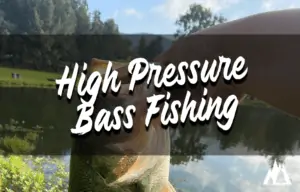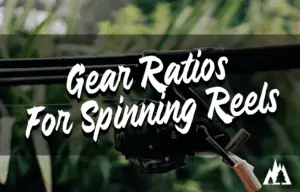Do Castable Fish Finders Really Work?
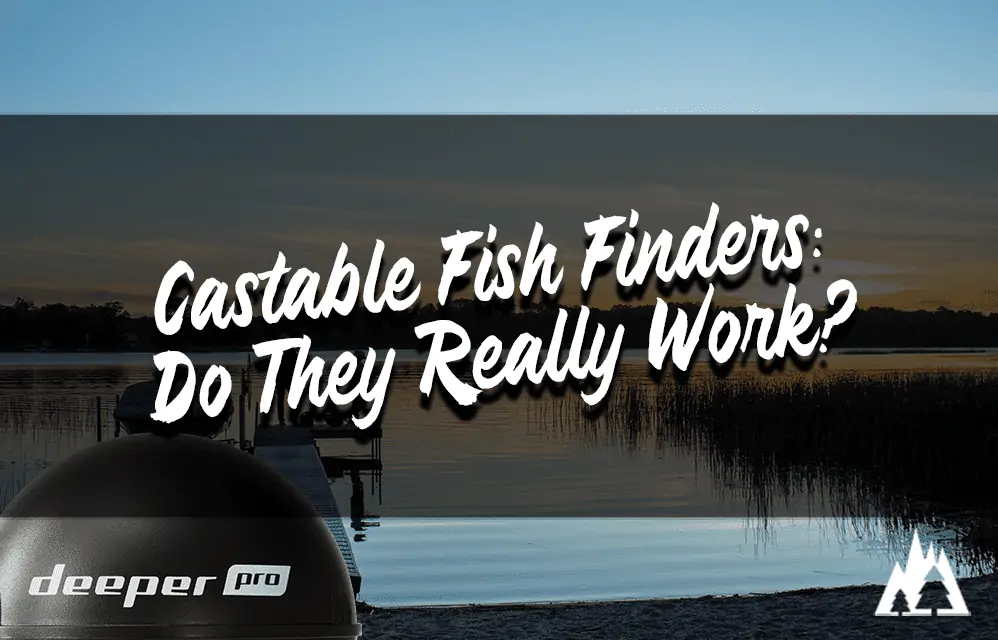
Do castable fish finders really work, and what exactly are they?
In short, castable fish finders help you locate fish without the hassle of owning a boat or kayak. They are an ultra-portable and cost-efficient way to help you know where the fish are hiding in unfamiliar waters.
The technology works just like any other mounted fish finder.
Of course, the tech will be better the more you pay, but it does work.
Is it cheating?
No more than an angler using their fish finder on a boat.
Or someone using a drone over a lake to find key areas with laydowns that can’t be seen with the naked eye.
Leveraging this technology doesn’t guarantee you’ll catch fish, but it will help increase your chances.
I know it’s not for everyone.
I get it.
Some people want to fish to catch fish, while others enjoy being out in nature.
But I do love the fact that technology is getting better and better in this sport.
And I’m always open-minded when seeing new gadgets appear on the market.
Even though this tech didn’t just drop in the market per se, if you’re new to this sport, it might not have been on your radar.
That’s why you’re here, I’m guessing.
So let me break down how these fish finders work and all the good stuff.
Let’s dive in.
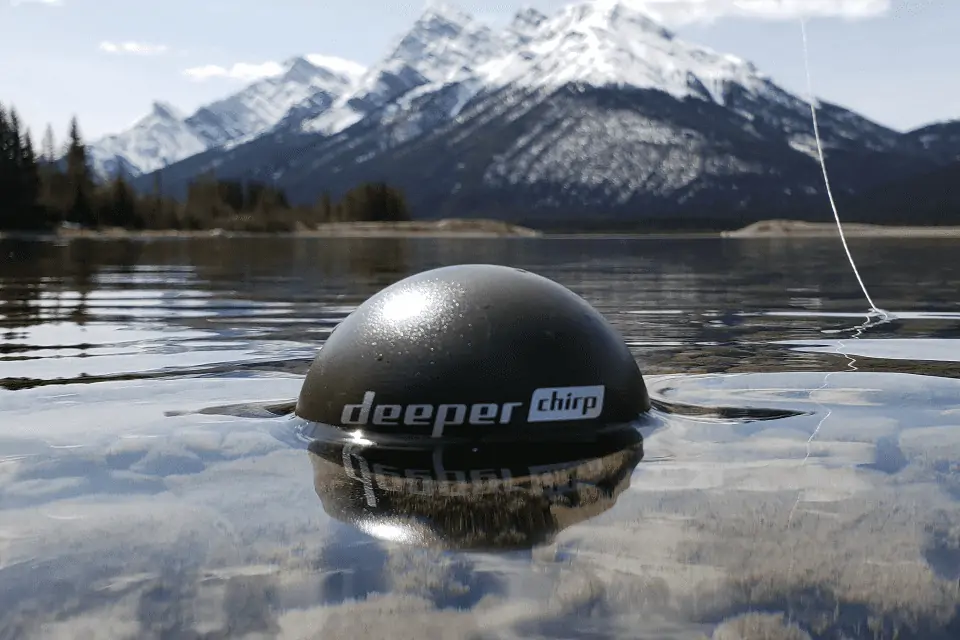
What is a Castable Fish Finder?
A castable fish finder is a portable device that uses sonar technology to detect and display underwater objects such as fish, structures, and other features. It can be used from the shore or on a boat or kayak.
As the name implies, you cast it out like a lure and let it float to record data.
This wireless fish finder sends sound waves in all directions using an electronic transducer mounted on the device.
It’s a device that’s invaluable for anglers looking to increase their catch rate.
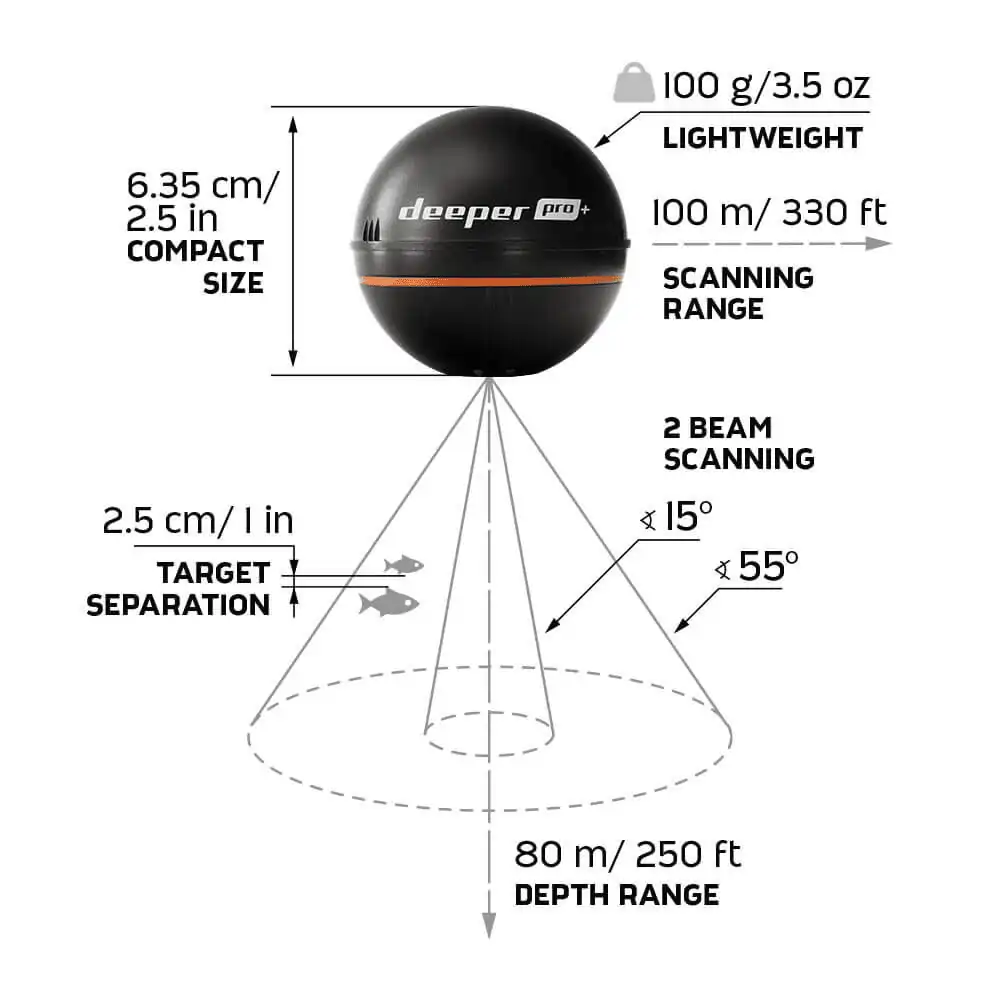
How Do Castable Fish Finders Work
Castable fish finders are a great way to get an idea of what’s beneath the surface without investing in a full-fledged boat and fish finder.
These devices use sound waves that travel through the water until they hit an object (fish, grass, limbs, bottom, etc.) and then bounce back, transmitting the object’s size, composition, and shape.
When these sound waves hit something underwater, they are reflected back to the receiver, which interprets them into data displayed on a screen or connected smartphone/tablet device. This data includes information about water depth, temperature, bottom composition, and, more importantly – the location of fish.
The biggest difference between a castable, portable fish finder and a standard one is that it doesn’t have to be mounted on anything to work.
Most anglers will have a different rod/reel combo to attach the fish finder to the main line.
You attach the portable fish finder directly to the end of your fishing line and cast it out to an area you want to record data.
You can leave it there if you want to know if there are any fish in that spot or reel it back slowly in fan-like motions for more detailed information about what’s below.
Make sure you use a thick, strong knot, so it doesn’t snap off. I recommend using a strong knot like the double-line uni knot for this.
It’s not the prettiest knot, but that’s not what you need it for.
Most popular brands will work with Android or Apple devices like phones or tablets; all you need is their app which can be downloaded from either platform’s store.
Once installed, follow their connection instructions so you can start using your device immediately.
Regarding accuracy, most castable fish finders come with depth readings down to 100 feet (30 meters) plus temperature readings.
Do Portable Fish Finders Work in All Conditions
Portable fish finders are a great tool for anglers looking to get the most out of their fishing trips.
They can provide invaluable information about the water you’re fishing in, such as depth, temperature, and even the type of structure present. But do they work in all conditions?
The answer is no. While portable fish finders can be used in many different environments, they don’t always perform optimally under certain conditions.
For example, when the water gets choppy or rough due to wind or waves, it can interfere with the accuracy of readings from a portable fish finder because its transducer (the device that sends sound waves into the water) isn’t securely fastened as it would be on a boat-mounted unit.
Surf fishermen should also avoid using these devices since they won’t give accurate readings in shallow waters less than three feet deep – often where surf fishermen cast their lines.
If you plan on fishing in deeper waters beyond 200 feet, these units may not be suitable, as this exceeds their rated range for accuracy.
On the other hand, there are some advantages to using portable fish finders over boat-mounted ones: portability being one obvious benefit.
These units are lightweight and easy to transport, so you can take them anywhere easily.
Whether it’s your local pond or lake or further away on vacation trips. Plus, some models even have night vision capabilities making them ideal for those who prefer late-night bass fishing sessions.
So while portable fish finders offer plenty of conveniences and features that make them attractive options for anglers everywhere, before investing in one, consider carefully what kind of environment you’ll mostly use it in and whether its specs meet your needs accordingly.
Are Castable Fish Finders Worth the Money
You’ll find multiple companies with a line of portable fish finders ranging from $100 all the way up to $360.
Are castable fish finders worth the money?
This is a question that many anglers ask themselves when considering purchasing one. They are:
- Small, portable devices that can be attached to your fishing line and cast out into the water.
- Provide real-time data on what’s happening beneath the water’s surface, allowing you to make more informed decisions about where to cast your line.
If you’re looking for an inexpensive way to get some extra information while fishing from shore or in shallow waters, then yes.
In that case, they could be a great investment.
They give you valuable insight into what’s going on underwater and allow you to cover more ground than traditional methods such as trolling or casting with lures.
Castable fish finders have several features that make them attractive for anglers who want something simple yet effective.
Most models will have sonar capabilities that allow you to see changes in depth and structure below the surface of the water and detect any nearby schools of fish. Some models even include GPS navigation to easily mark spots with good catches waiting for you.
The main downside of these devices is their lack of power compared to traditional boat-mounted fish finders, which offer much higher resolution images and greater range coverage due to their larger size and better technology. However, this doesn’t mean that castable versions aren’t useful – far from it.
These devices could prove beneficial for those who don’t need all the bells and whistles offered by boat-mounted units but still want access to valuable data while fishing from shore or in shallow waters.
Whether or not castable fish finders are worth it depends largely on how much detail you need when fishing and how often you plan on using them.
If all you’re after is basic information regarding depths and structures, these devices should serve your needs just fine; however, if detailed imaging is important, then perhaps investing in a more powerful unit would be best suited for your needs instead.
Features to Look for in a Castable Fish Finder
When shopping for a castable fish finder, there are several features to consider. First, sonar technology and frequency range, display options and resolution quality, connectivity options, and compatibility with other devices should all be considered when selecting the right model for your needs.
Sonar Technology and Frequency Range
The type of sonar used in a castable fish finder is important because it affects how well the device can detect underwater objects.
Traditional sonar uses high-frequency sound waves that travel through water at different speeds depending on temperature, salinity, pressure, etc., allowing it to detect objects like rocks or schools of fish.
More advanced models use dual-beam sonar, which sends out two beams simultaneously. One wide beam for larger targets like structures or baitfish schools and one narrow beam for smaller targets such as individual fish.
The frequency range of the transducer determines how deep you can scan underwater. The higher the frequency (kHz), the shallower you can go.
Lower frequencies will allow you to reach greater depths but may not provide as much detail in shallow waters.
Many modern castable fish finders come equipped with Bluetooth or Wi-Fi capabilities, which allow them to connect wirelessly with smartphones or tablets running compatible apps such as FishSmart by Humminbird or Deeper Smartphone App by Deeper USA Incorporated.
This allows anglers to access real-time information about their catches from anywhere without carrying around bulky equipment like traditional depth sounders do, making fishing trips easier than ever before.
Some models feature GPS navigation capabilities, enabling users to track their location even if they don’t have cell service.
It’s also important to consider the features that best suit your needs. This includes looking at the sonar technology and frequency range, display options, resolution quality, and connectivity options for compatibility with other devices.
Understanding Sonar Readings
A castable fish finder uses sonar technology to detect objects in the water, such as fish and other underwater structures.
You need to understand how sonar works and what the readings mean to use it effectively.
The most common type of sonar is side-scanning or “broadband” sonar, which sends sound waves that bounce off objects in the water and return to the device as an image on a display screen.
This image will show any nearby fish or structure along with their size, depth, and distance from your boat or kayak.
Reading Water Conditions
Knowing how to read water conditions can help you determine where fish may be hiding or congregating so you can target them more effectively with your castable fish finder.
Look for areas of current breaks, eddies, deep holes, drop-offs, weed beds, rocks piles, and other likely spots for baitfish activity that could attract larger gamefish species like bass or walleye into the area too.
Even if you have identified potential hotspots using your castable fish finder, sometimes it pays off to move on if there isn’t much action.
Fish tend to move around throughout the day, so don’t get stuck fishing in one spot for too long without seeing any results.
Try moving elsewhere if nothing seems to be biting after a few casts.
Common Problems
One of the most common problems with castable fish finders is poor signal strength. This can be caused by various factors, including interference from other electronic devices, environmental conditions such as wind and waves, or even the type of transducer used.
To ensure optimal performance, it’s important to use a high-quality transducer designed for your specific fishing environment. Additionally, make sure you are using an appropriate power source and have adjusted the settings on your device accordingly.
Low Battery Life
Another issue that can arise when using a castable fish finder is low battery life. The amount of time you will get out of each charge depends on how often you are using the device and what features you have enabled at any given time.
Let’s say, for example, to maximize battery life, try to keep usage to a minimum when not actively searching for fish and disable unnecessary features such as Wi-Fi or Bluetooth connectivity while in use.
Opt for models with rechargeable batteries rather than disposable ones so they can be replaced easily when needed without purchasing new units.
Inaccurate readings can also occur due to incorrect settings or improper calibration of the device.
Take some time before heading out on your next fishing trip to make sure all settings are correct and calibrated properly according to manufacturer instructions to get accurate results from your castable fish finder every time you go out on the water.
Although castable fish finders can be a great tool for locating and tracking fish, they come with their own challenges.
Before You Go
Here’s a quick video I found from Fletcher, along with a few other resources to make you a better angler:


